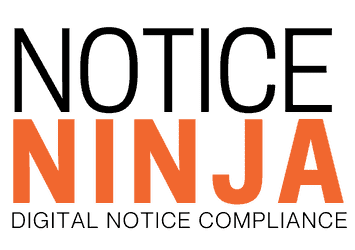Yes, NOTICENINJA is corporate tax notice compliance software that automates key workflows including notice assignments. The platform employs a rule-based system that can manage multiple level rules and ensure notices are directed to the appropriate stakeholder. As a result, you’ll never have to worry about notices being misdirected or slipping between the cracks.

Form 941 Filing Is Costing You More Than You Think

01 July
The beginning of July is upon us, and for tax operations and payroll teams, that means one thing: Q2 filing urgency. With Form 941 due July 31, now is the time to review, align, and address any open issues before the quarter officially ends.
But this isn’t just a compliance deadline. It’s a hidden cost center.
Errors on Form 941 don’t just trigger IRS notices. They often require Form 941-X corrections and carry penalties that can reach up to 25% of the total tax owed, plus the administrative burden of responding under pressure. That doesn’t include the cost of lost time, missed filings across clients, or frustrated executives when risk turns into reality.
Whether you’re a payroll company managing 1,000+ clients, a PEO supporting tens of thousands of employees’ lives, or a corporate tax team juggling filings across jurisdictions, this is the moment to act. The IRS continues to tighten scrutiny and increase automation to flag discrepancies.
The real risk isn’t just penalties. It is continuing to operate without a system that prevents them.
The Filing Reality Right Now
Form 941 isn’t just another tax form. It represents your organization’s ability to execute consistently under pressure. It covers critical data on income tax withholding, Social Security, and Medicare contributions. Every field counts. And for entities not subject to FUTA, oversight still applies.
Despite this, many organizations are still processing filings manually using shared inboxes, spreadsheets, and disconnected folders. These methods increase the risk of error with every cycle.
Too many organizations are still stuck in reactive mode. Manual corrections, preventable IRS notices, and mounting penalties are more than just operational headaches. They directly impact margins, overextend valuable teams, and pull focus away from priorities like improving client relationships, expanding service offerings, and reducing client turnover.
“We built NOTICENINJA for this exact moment,” says Rick Pinkerman, COO and Cofounder. “It’s not just about automation. It’s about confidence. You need to know that your 941 filing is correct, that it’s backed by documentation, and that if anything changes, you’re equipped to respond immediately.”
Filing the Smart Way This Quarter
Using NOTICENINJA, compliance teams can streamline Q2 filings. Plus, reduce errors, automate manual steps, and build an audit-ready paper trail from the start.
Key capabilities include:
- Automated Intake of 941 Notices and Filings: Forms are categorized and tracked by jurisdiction and urgency.
- Version Control for 941-X Corrections: Every amendment is documented and accessible, improving accuracy and speed.
- Audit-Ready Documentation: Supporting files and communications are centralized for compliance confidence.
OCR (Optical Character Recognition) plays a vital role. It turns IRS forms and correction letters into searchable, structured data. Teams no longer need to manually enter EINs or wage figures. Instead, they validate, approve, and track with speed and accuracy.
Act This Week: Organize, Review, and Assign
Before this week ends, bring your payroll/tax team together for a focused check-in. Use this suggested 30-minute meeting agenda to align on outstanding Q2 items and prep for a stronger Q3:
Suggested Internal Meeting Agenda
|
Time |
Topic |
|
2 min |
Welcome & Meeting Objective |
|
10 min |
Q2 Status Check: Filing Progress, Pending Issues, 941-X Needs |
|
5 min |
Common Filing Risks and IRS Triggers |
|
5 min |
Walkthrough of Closeout Checklist |
|
5 min |
Planning for a More Efficient Q3 Filing Cycle |
|
3 min |
Assignments & Next Steps |
Q2 Filing Closeout Checklist:
| ✅ | Checklist Item | Purpose |
|---|---|---|
| ☐ | Confirm all Q2 payroll data is validated and finalized | Avoids late corrections or mismatched values triggering Form 941-X filings |
| ☐ | Ensure all Form 941 drafts are reviewed and approved internally | Prevents filing errors and unnecessary IRS notices |
| ☐ | Identify any discrepancies requiring Form 941-X corrections | Enables early resolution before IRS notification |
| ☐ | Verify documentation and backup are organized for audit readiness | Prepares your team to respond confidently if audited |
| ☐ | Determine which entities do NOT file FUTA and confirm exclusion accuracy | Ensures correct reporting and prevents inclusion errors |
| ☐ | Document any filing issues or IRS correspondence from Q2 | Tracks unresolved issues that may carry into Q3 |
| ☐ | Evaluate options to streamline Q3 filing processes | Positions your team to file smarter and faster next quarter |
What Happens When Teams Wait
Delaying error correction or waiting for an IRS notice to identify issues leads to unnecessary cost and operational strain. Filing discrepancies, especially on Form 941, often result in a cascade of notices, last-minute corrections, and disrupted workflows.
Teams caught in this cycle end up spending more time managing consequences than improving outcomes. The result is reduced productivity, strained resources, and increased pressure across payroll and compliance functions.
Taking proactive steps before the quarter closes prevents these reactive scenarios and gives teams space to focus on higher-priority work.
Plan Ahead for Q3 and Beyond
While you wrap up Q2, Q3 readiness begins now, July 1. This is the ideal time to reassess your systems, optimize workflows, and prepare your team for a smoother filing cycle.
ROI data from automation-focused research helps make the case. A Forrester study on a large, resource-intensive organization found that investing $1.7 million in tax engine automation generated $3.8 million in benefits over three years delivering a 120% ROI and cutting error rates from 3% to under 1%.
NOTICENINJA offers a comparable path, tailored for payroll and tax filing workflows:
- OCR-enabled capture transforms IRS documents into searchable, structured data
- Centralized workflows provide full visibility across jurisdictions and filing stages
- Version control and exception handling reduce filing errors and minimize rework
- Audit-ready documentation eliminates last-minute scrambles and improves transparency
Why You Needed Tax Notice Automation Yesterday
🔥The longer you wait, the more expensive it gets. Penalties grow, resources strain, and time runs out. Now is the time to stop absorbing avoidable risk.
Download: Why You Needed Tax Notice Automation Yesterday to make the internal case for change and see how tax teams are reducing costs and reclaiming control with automation.
RELATED POSTS
- Demystifying Common Corporate Tax Notices: A Guide to Responding Efficiently
- How to Never Worry About PEO Tax Notices Again
- Payroll Tax Compliance Software That Automates Notice Resolution and Avoids Penalties
